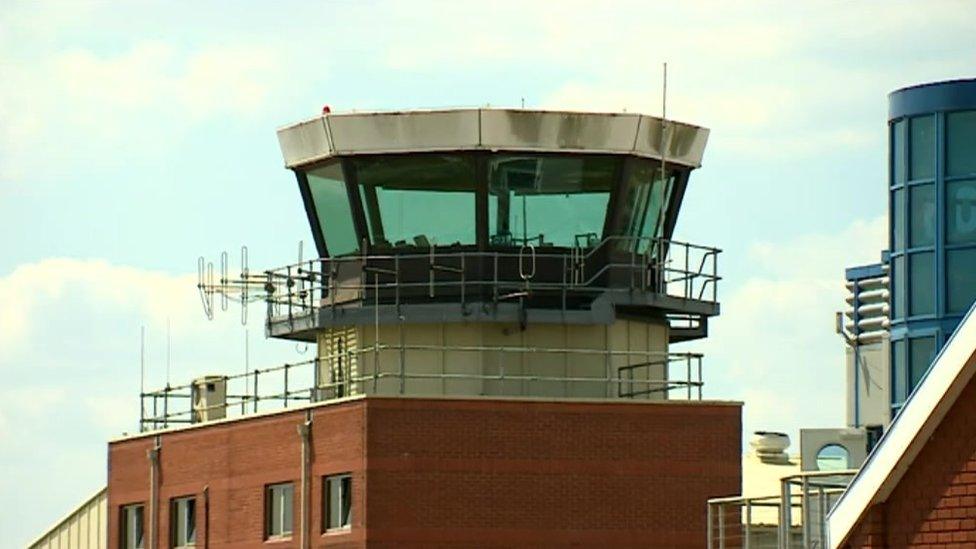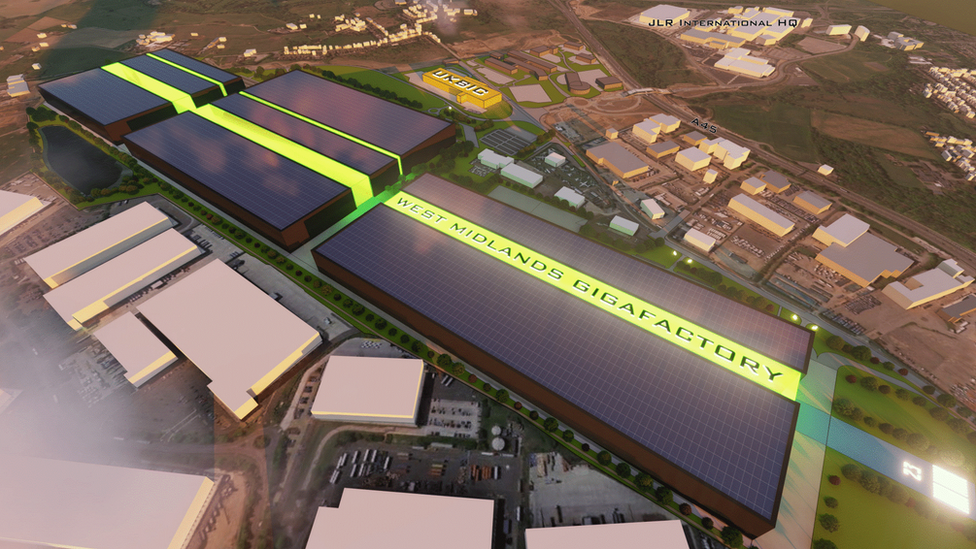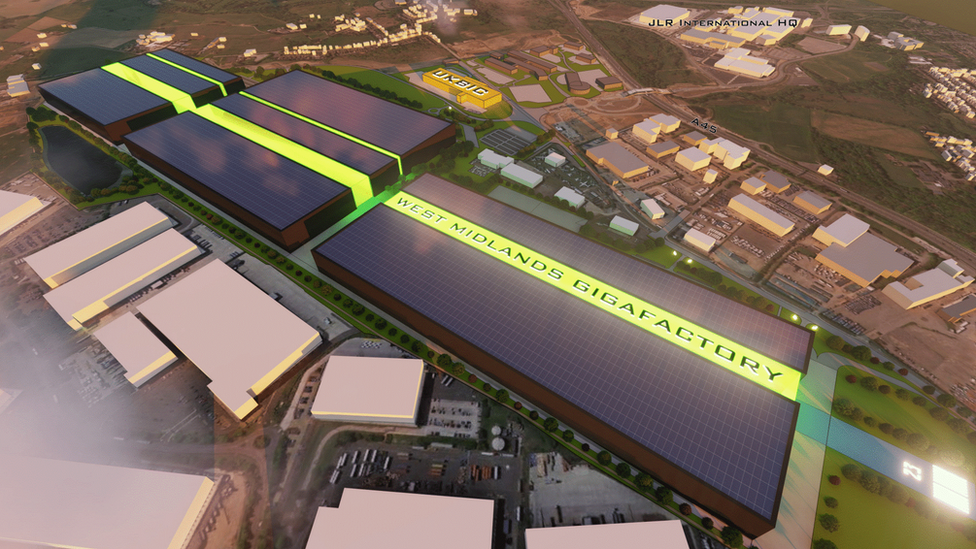Unexploded wartime bomb fears over Coventry gigafactory plan
- Published

It is hoped the gigafactory in Bagington, Warwickshire, would create up to 6,000 new jobs
Unexploded World War Two bombs could cause deaths and major damage if disrupted during work to build a gigafactory at a former RAF site.
Outline planning permission was granted earlier this year for a site near Coventry which could create 6,000 jobs.
The city council has committed about £2m to the scheme, despite some opposition.
But a risk assesment is warning of a potential threat posed by both German and British bombs and ammunition.
The gigafactory is earmarked for land which was the site of RAF Baginton.
It says historical records showed Baginton Airfield, as it was then known, was a bombing target during the war for the Luftwaffe, Germany's air force.
According to consultants 6 Alpha, which conducted the risk assessment, research found records that noted RAF Baginton was bombed during the conflict but that "the exact locations of the bomb strikes was not recorded".

A proposed plant is set to be built at Coventry Airport
"RAF Baginton was heavily damaged by bombing during WWII, and whilst the exact location of the damage was not recorded, it is highly likely bomb damage was recorded on-site or in close proximity," the report says.
Sections of the site had undergone development work in the last 77 years, meaning any unexploded bombs would have been discovered and removed, it said.
But large areas of the site have remained largely untouched since the war, leaving the potential for deep-buried explosives to be present, it added.
The report warned the possible consequences of unexploded bombs being accidentally triggered included deaths, "severe damage to plant and equipment", and damage to nearby buildings and underground utilities.

Coventry City Council has committed around £2m to the scheme
"Given that RAF Baginton was located on-site and was subjected to bombing, the following risk mitigation measures are recommended as a minimum, in order to reduce risks as low as reasonably practicable, during intrusive works in all previously undisturbed ground... since it was potentially contaminated with unexploded ordinance," the report concluded.
Officials behind the report advised that an emergency response plan be produced and a safety awareness briefing conducted.
They also recommended a magnetometer survey be carried out before any excavation takes place in the areas of the development site considered high risk.
The council is understood to be confident that dangers revealed by the risk assessment will not delay the plans.
A spokesperson for the West Midlands Gigafactory, the official title of the scheme, said: "A Detailed Unexploded Ordnance Threat and Risk Assessment is standard practice for many construction projects and is a precautionary measure given the prevalence of bombings across the country and Coventry in particular during World War II.
"There's no formal obligation that requires a UXO risk assessment to be undertaken.
"The survey was desk based and suggests a number of standard precautionary measures ahead of work on site. This is routine in a city like Coventry. It does not have any impact on planning permission secured for the site earlier in the year and will not hold up any works onsite."
Plans for the gigafactory have previously faced opposition from businesses already based at the airport and the Civil Aviation Authority.

Follow BBC West Midlands on Facebook, external, Twitter, external and Instagram, external. Send your story ideas to: newsonline.westmidlands@bbc.co.uk, external
Related topics
- Published22 June 2022

- Published28 January 2022

- Published15 July 2021

- Published13 November 2015
